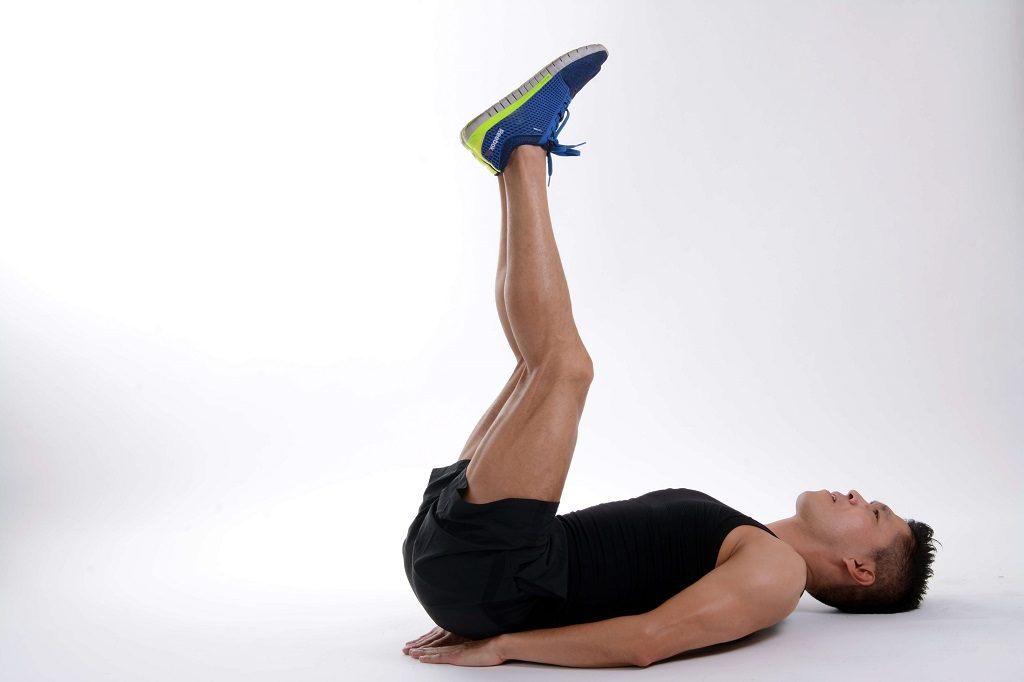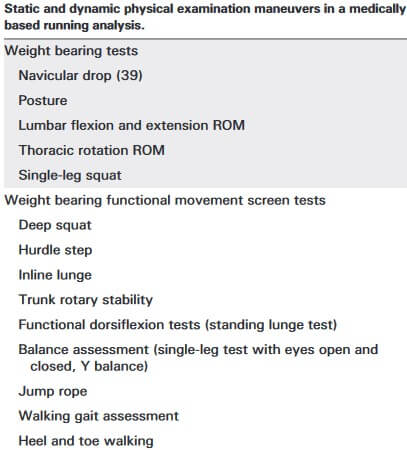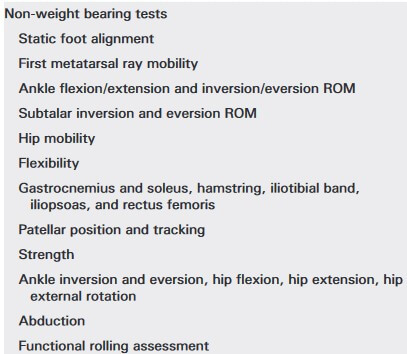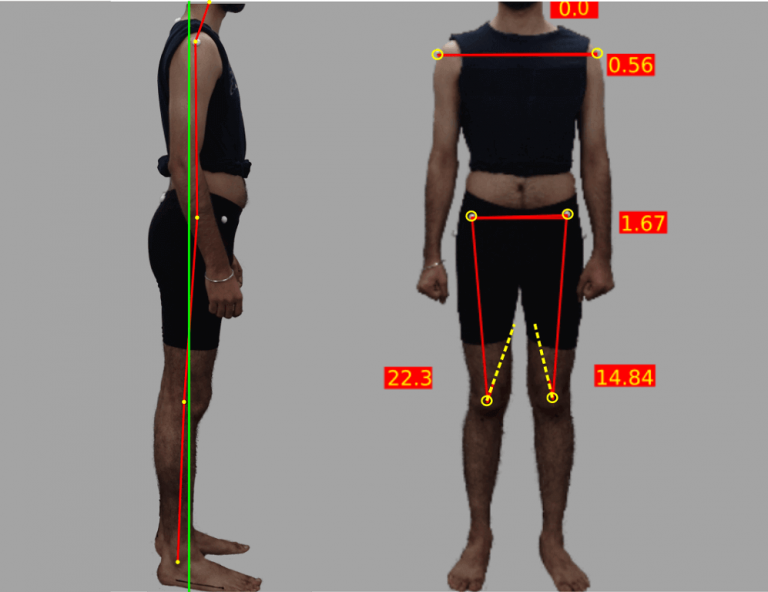


WEIGHT BEARING TESTS
Posture Assessment
Posture analysis is an important element of a running assessment. It is a static exam which can be done using visual observation or a posture analysis software (depending on the amount of information you require).
In a typical posture exam, you should assess the anterior, posterior & lateral views of the patient. Some common postural deviations that you should look for are:
1. Uneven shoulders and spinal curvature may lead to asymmetric loading during running.
2. Excessive Anterior pelvic tilt limits the hip extension and trunk rotation during gait.
3. Alignment of the knees (valgus, neutral, or varus) and the ankle inversion and eversion during stance.
Refer to our article on Posture analysis for a detailed ‘posture checklist’ you can use in your clinic.

Single Leg Squat Test
The single-leg squat test is a commonly used functional test for the hip & lower extremity.
It is useful in evaluating the strength & balance of the lower body, particularly the quadriceps and gluteal muscle groups, and the hip stabilizers.
Here is a great instructional video you can use to assess single leg squats in your patients and identify any deviations.
Spine ROM
Y Balance Test
The Y Balance Test (YBT) is a simple, yet reliable, test to measure dynamic balance. Developed to standardize the modified Star Excursion Balance Test (mSEBT), the YBT has become extremely popular due to its simplicity and reliability.
Refer to the adjacent video to learn how you can use the Y balance test in your practice.
Functional Dorsiflexion Tests (Standing Lunge Test)
The Standing Lunge test helps in assessing the dorsiflexion range of movement (DROM) at the ankle joint. It is a simple assessment which you can carry out using a wall and a tape measure.
To know more about Standing Lunge Test, refer to the adjacent video.
Functional Movement Screen Tests
NON-WEIGHT BEARING TESTS
Non-weight bearing tests serve as a complement to the weight bearing tests. Some commonly used assessments include foot alignment, first metatarsal mobility, joint ROM, flexibility and strength of lower extremity muscle groups.
Hip Mobility Test
Reduced hip extension is a common observation in recreational runners. Traditionally, it is believed that lack of hip extension may be associated with reduced flexibility of the iliopsoas muscle.
Additionally, recent studies suggest that reduced hip flexibility and anterior pelvic tilt are coordinated motions. Runners who display decreased hip extension ROM during running often show an increase in the anterior pelvic tilt.
The reverse lunge is an easy way to test hip mobility. Here is an instructional video.
Flexibility Test
Patellar Position and Tracking
Patellar tracking helps in determining whether the pain symptoms are related to patellofemoral alignment. Lateral trajectory of patella during a squatting motion or gait(detected through running gait analysis) indicates poor vastus medialis strength and high iliotibial band tension.
While assessing the patellar postion, it is important to assess any right-left asymmetry.
Strength
Strength measurements are very useful in tracking the progress of rehabilitation. Evaluating the patient’s muscle strength prior to treatment serves as a solid baseline to determine if the rehab plan is improving the patient’s condition.
Manual muscle-testing is the most common methods to measure strength in a running assessment. The MRC scale is a handy tool to rate muscle power on a scale of 0 to 5 in relation to the maximum expected for that muscle.
For more information on how to use the MRC scale in clinical practice, refer to this video.
In such cases, gait analysis of the runner helps in identifying the possible root cause of the musculoskeletal problem and identify various compensations that the patient exhibits to make up for the abnormality. Analyzing the runner’s gait will help you understand the relationship between individual physical impairments and altered running mechanics. It will also help you assess how these alterations relate to the patient’s injury.
Hence, it is important to follow a physical examination step with a comprehensive gait analysis to obtain a complete running assessment. Our next post will cover some important aspects of gait analysis and how you can perform it at your clinic.

